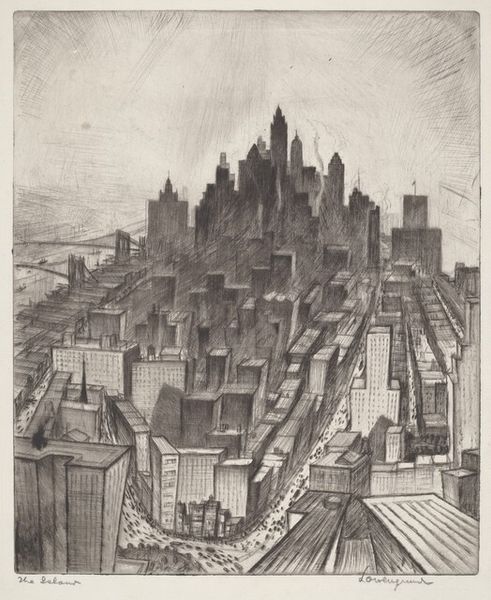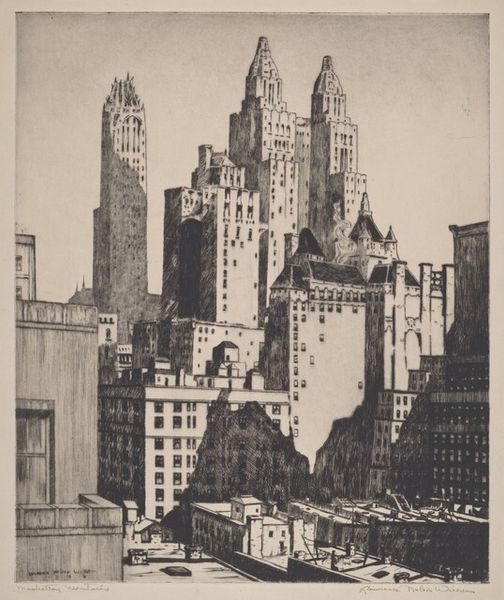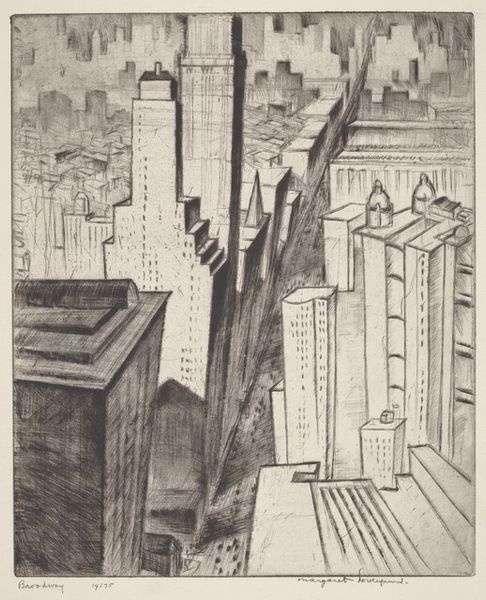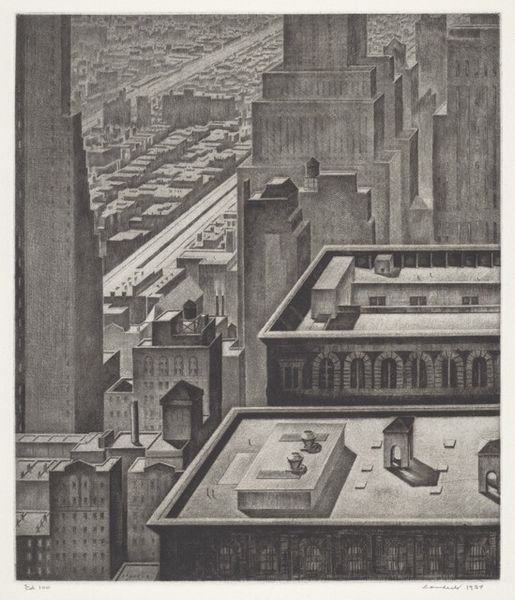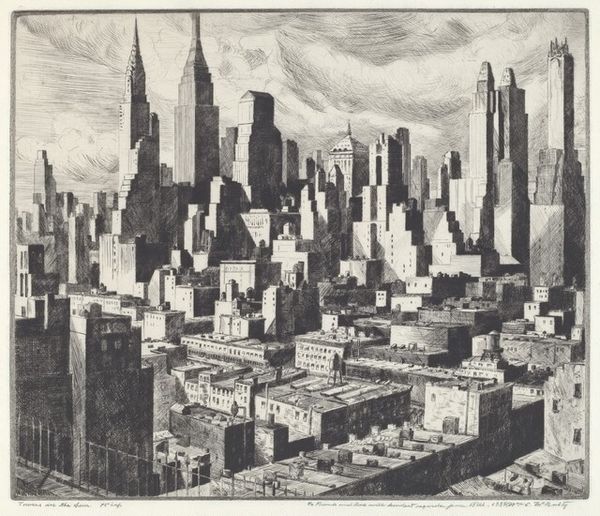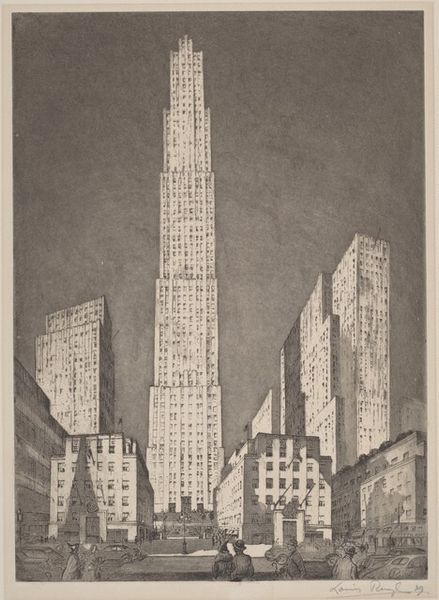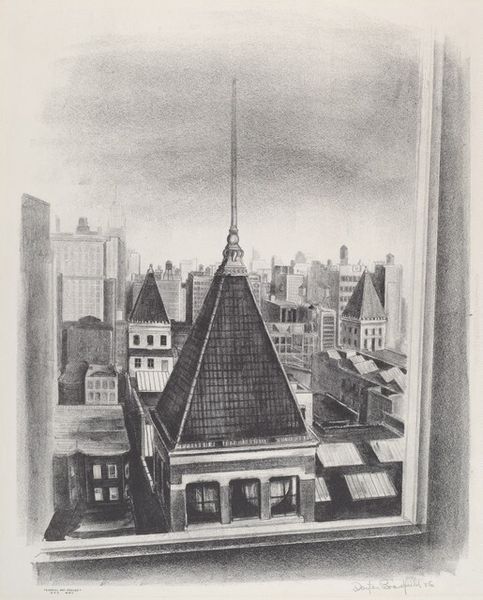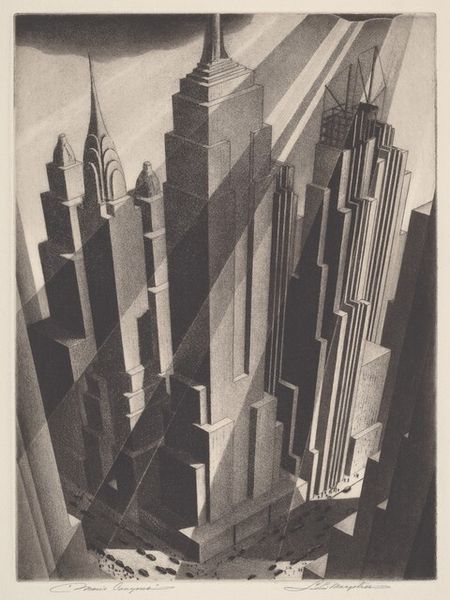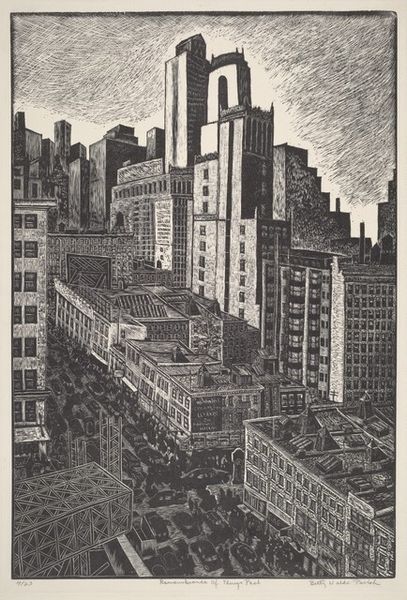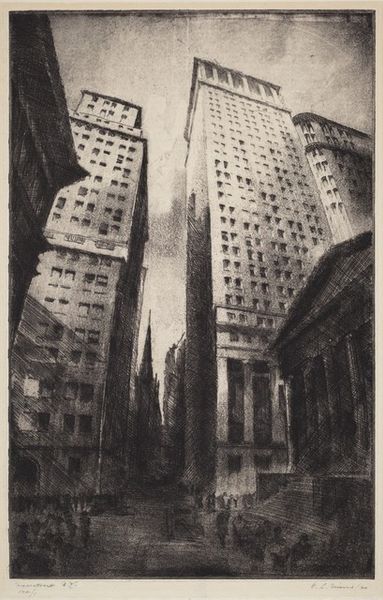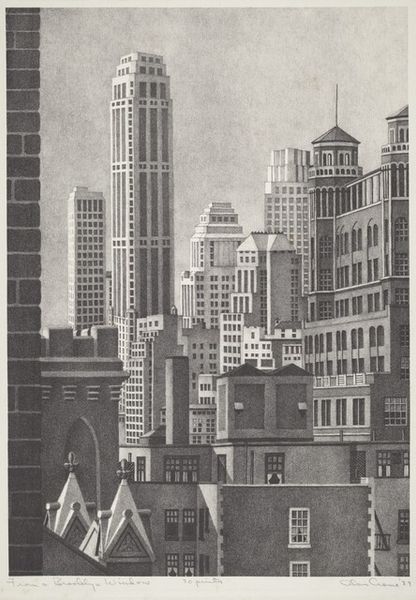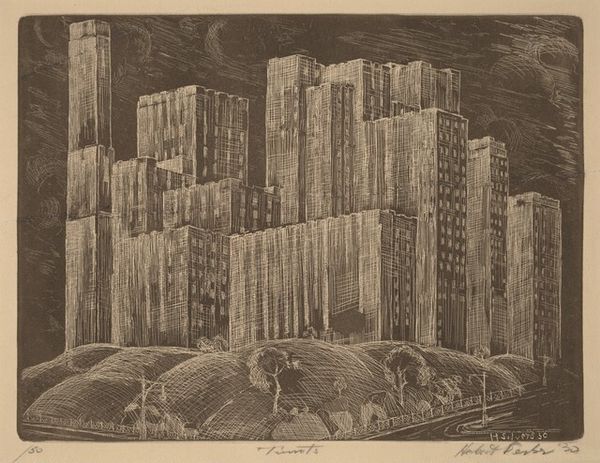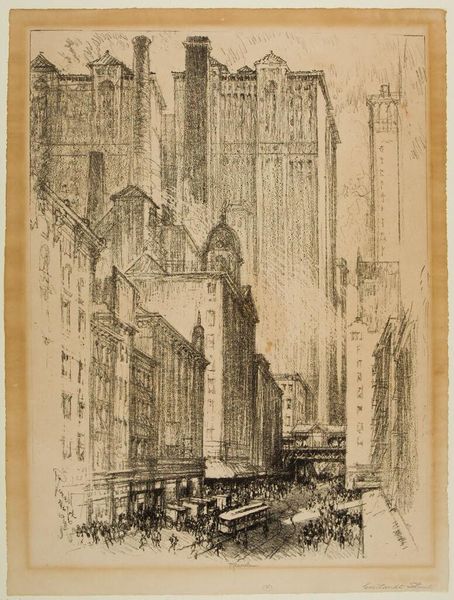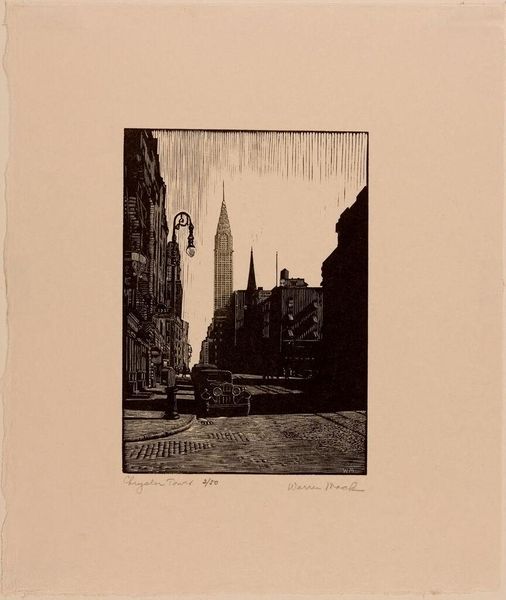
drawing, print, graphite
#
art-deco
#
drawing
# print
#
historic architecture
#
graphite
#
cityscape
#
modernism
#
realism
Dimensions: image: 68.9 x 59.7 cm (27 1/8 x 23 1/2 in.) sheet: 80 x 64.1 cm (31 1/2 x 25 1/4 in.)
Copyright: National Gallery of Art: CC0 1.0
Editor: So, here we have Armin Landeck’s "View of New York" from 1932, a graphite drawing. It's…almost overwhelming, so dense with detail. What symbols or deeper meanings do you think are embedded within this cityscape? Curator: Look at the sheer verticality, the aspiration towards the sky. Those skyscrapers, especially the Chrysler and Empire State Buildings, aren’t just architectural marvels; they're visual assertions of power, progress, and a distinctly American ambition. Doesn’t the density almost suffocate you? What does that evoke in you? Editor: It’s kind of a love-hate thing. I feel dwarfed by it, but also like, this is a place where anything is possible. The details…all the tiny windows… Curator: Exactly! Windows as eyes, individual lives stacked upon lives, creating a collective experience. It speaks to anonymity and unity, doesn't it? And the gray palette, the absence of vibrant color – what does that whisper to you about the mood of the piece? Remember this was created during the Depression era... Editor: Melancholy? Maybe a sense of…impersonality? Like the buildings are indifferent to the people below? I hadn't connected it to the Depression. Curator: It's as though Landeck captured the paradox of the modern city: a symbol of hope and innovation built upon the anxieties of the age. The towering structures are monumental achievements but maybe alienating. Can architecture convey emotion, then? Editor: That’s a new way of looking at buildings. It makes you think about who built them, and for what purposes. Curator: Precisely! It’s about unearthing the stories encoded in these stones. We are looking at a city – or at least Landeck's vision – that is triumphant, resilient, yet profoundly human. Editor: This has made me think about how cityscapes reflect a culture's values and its anxieties in ways I had never considered. Thank you for that insight.
Comments
No comments
Be the first to comment and join the conversation on the ultimate creative platform.
